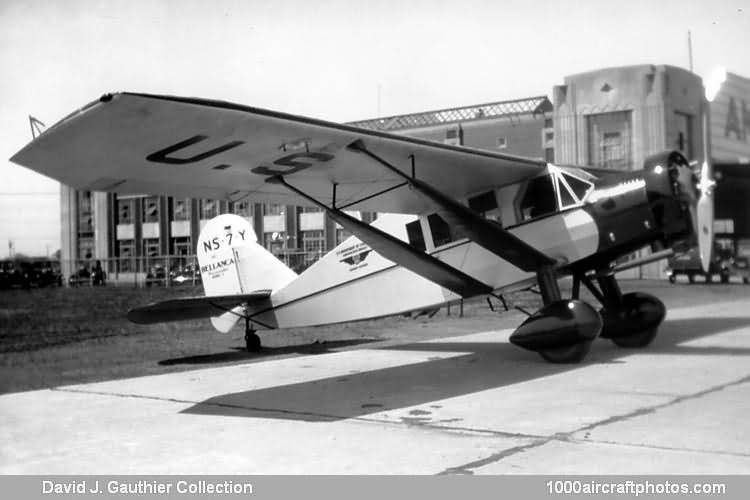03/31/2013. Remarks by Johan Visschedijk: "Derived from the earlier Wright-Bellanca monoplanes, the Pacemaker's immediate ancestor was the CH-200, designed by Giuseppe M. Bellanca after parting from the Wright company in 1927. The CH-200, certificated in June 1928, was a six-seat high-wing cabin monoplane with a 220 hp Wright J-5 Whirlwind engine and typical Bellanca "bow-legged" main landing gear. From it was developed the CH-300 (fitted with a 300 hp J-6 Whirlwind), which first flew in late 1928 or early 1929 and was the most numerous model, some three dozen being built for regional airlines, charter operators and utility use.
First of the line to bear the name Pacemaker was the PM-300 freighter, essentially a modified CH-300 with "straightened-out" main gear legs (for wheels, skis, or twin floats). The PM-300 could carry four persons and still offer 34 cu.ft (0.96 cu.m) of cabin space for 850 lb (386 kg) of freight. It was followed by the 300-W, certificated in June 1930, with a 300 hp Pratt & Whitney Wasp Junior engine.
The Depression meant that only about half a dozen of this variant were built, but Bellanca survived the economic troubles better than many and in 1932 introduced the Pacemaker Model E with increased wing area, wheel spats and a Townend-ringed 420 hp Wright R-975-E2, which greatly improved performance. Again, however, only a handful were completed, and the same fate attended the ultimate Senior Pacemaker version, which received type approval in July 1935 as the Model 31-40 (with the R-975-E2 engine) and 31-42 (with a R-975-E3 engine).
Larger and faster than its predecessors, seating up to eight people, and with a NACA-cowled engine, the Senior still had a competitive performance but by then later Bellanca designs were winning the orders. A rugged, go-anywhere aeroplane that could carry "anything that would go through the door", the Pacemaker was especially popular in areas with cold climates, notably Canada, Alaska and Norway."
